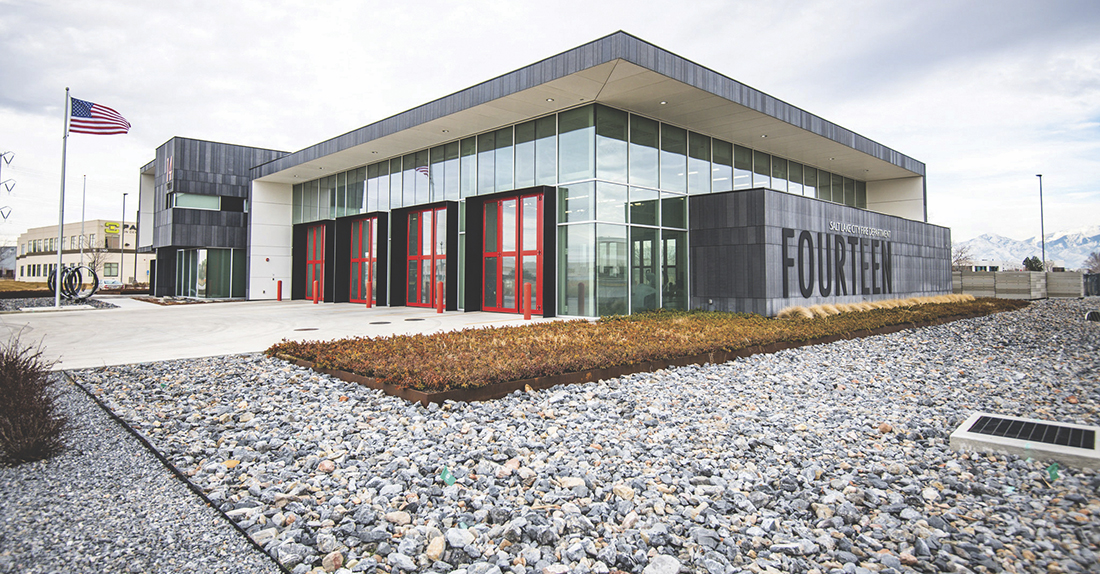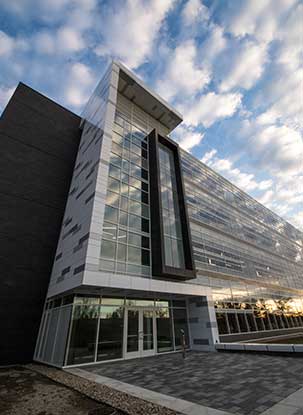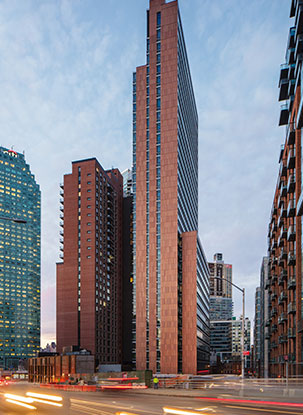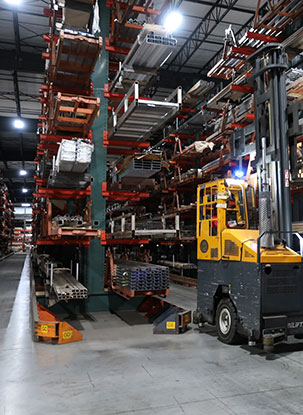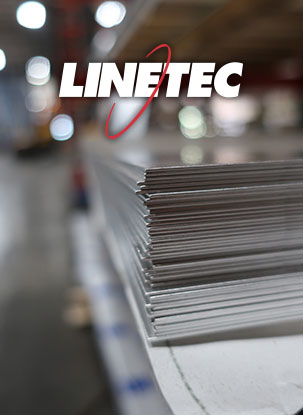TODAY’S HIGH QUALITY ANODIZED ARCHITECTURAL FINISHES ARE EXTREMELY DURABLE. But even the best finish needs a little TLC, and with the most careful treatment of the windows, curtain-wall or storefront during installation and daily use, occasional damage will occur.

|
Cleaning Procedures
|
Cleaning procedures for aluminum should be initiated as soon as practical after completion of installation to remove construction soils and accumulated environmental soils and discolorations.
Cleaning work should start at the top of the building and proceed to the ground level in a continuous drop. Using a forceful water spray, an area the width of the stage or scaffolding should be rinsed as cleaning proceeds from the top down.
Because surface soils may be light or heavy, several progressively stronger cleaning procedures may be employed depending of the severity and tenacity of the soil. Only trial and simplest procedure to remove the soil is the one that should be used.
For light soils, the simplest procedure is to flush the surface with water using moderate pressure. If soil is still present after air-drying the surface, scrubbing with a brush or sponge and concurrent spraying with water should be tried. If soils still adhere, than a mild detergent cleaner should be used with brushing or sponging. Washing should be done with uniform pressure, first horizontally then vertically. Following the washing the surfaces must be thoroughly rinsed by spraying with clean water.
If it is necessary to remove oil, wax, polish, or other similar materials, MEK or an equivalent solvent is recommended for clean up. Extreme care must be exercised when solvents of this type are used since they may damage organic sealants, gaskets and finishes. These solvents should never be used on anodic finishes protected by clear organic coatings unless the organic coating has deteriorated and should be removed.
Removing heavy surface soils may require the use of an abrasive cleaning pad. In this procedure the pad is thoroughly soaked with clean water or a mild detergent cleaner and the metal surface is hand scrubbed with uniform pressure. Scrubbing action should be in the direction of the metal grain. Scrubbing with a nylon-cleaning pad impregnated with a surface protectant material is also recommended for removing stubborn soils and stains. After scrubbing, the surface should be rinsed thoroughly with clean water to remove all residue.
In some circumstances it may be desirable to wipe the surface with a solvent. The surface is then permitted to air dry or is wiped dry with a chamois, squeegee or lint-free cloth.
Using power-cleaning tools may be necessary to remove unusually heavy soils from large areas including panels and column covers. When using such tools, the surface must be continually flushed with clean water or a mild detergent cleaning solution to provide lubrication and a medium for carrying away the dirt. After an area has been machine scrubbed, it must be rinsed with clean water and thoroughly scrubbed with a fairly stiff bristle brush. The surface may then be air dried or wiped dry.
|
Inspection
|
|
Cleaning Precautions
|
Certain precautions must be taken when cleaning anodized aluminum surfaces. Aluminum finishes must first be identified to select the appropriate cleaning method.
- Aggressive alkaline or acid cleaners must never be used.
- Cleaning hot, sun-heated surfaces should be avoided since possible chemical reactions will be highly accelerated and cleaning non-uniformity could occur.
- Strong organic solvents, while not affecting anodized aluminum, may extract stain-producing chemicals from sealants and may affect the function of the sealants.
- Strong cleaners should not be used on window glass and other components where it is possible for the cleaner to come in contact with the aluminum.
- Excessive abrasive rubbing should not be used since it could damage the finish.
|
On-Site Touch Up and Correcting More Severe Damage
|
 CORRECTING MORE SEVERE DAMAGE: (Calling in the Pros) At times a window, curtain-wall or storefront frame will become damaged or discolored beyond the point where simple field touch-up will correct the problem. Damage can result from a variety of sources including final cleaning of the building facade without proper protection of the aluminum surfaces, environmental impact from sea-coast or corrosive atmosphere exposure, long term neglect, or selection of the wrong finish at the time the material was finished and fabricated.
CORRECTING MORE SEVERE DAMAGE: (Calling in the Pros) At times a window, curtain-wall or storefront frame will become damaged or discolored beyond the point where simple field touch-up will correct the problem. Damage can result from a variety of sources including final cleaning of the building facade without proper protection of the aluminum surfaces, environmental impact from sea-coast or corrosive atmosphere exposure, long term neglect, or selection of the wrong finish at the time the material was finished and fabricated.Following the site visit the field service professional will prepare a quotation for the work to be completed and also a sample color chip for approval. At times preparation of an on site sample for approval (a single door, panel or window) will be recommended. Following acceptance of the quotation and samples and preparation of a contract for the work to be completed, the work will begin. Field repairs can generally be performed at temperatures above 50 degrees Fahrenheit. The field service professional will handle all of the details such as permits, sidewalk protection and barricades.
Contracting for the services of a professional who specializes in the refinishing of architectural metals will assure that the work is completed using the correct methods and proper materials, assuring satisfaction with the long tern results guaranteed.
